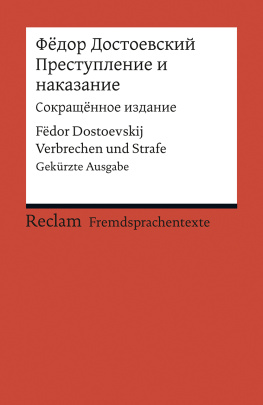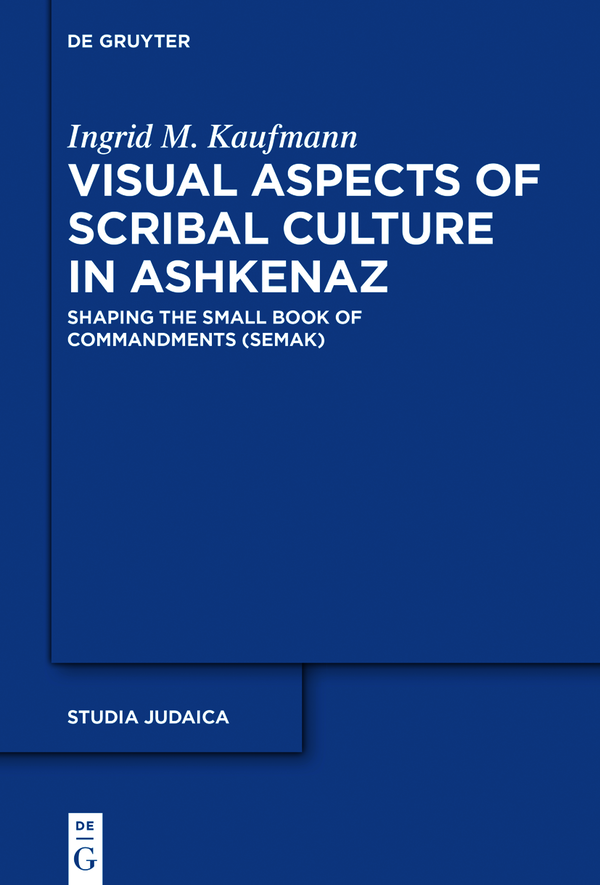Studia Judaica
Forschungen zur Wissenschaft des Judentums
Edited by
Ernst Ludwig Ehrlich
Gnter Stemberger
Charlotte Fonrobert
Elisabeth Hollender
Alexander Samely
Irene Zwiep
Volume
ISBN 9783110569384
e-ISBN (PDF) 9783110574418
e-ISBN (EPUB) 9783110573626
Bibliographic information published by the Deutsche Nationalbibliothek
The Deutsche Nationalbibliothek lists this publication in the Deutsche Nationalbibliografie; detailed bibliographic data are available on the Internet at http://dnb.dnb.de.
2019 Walter de Gruyter GmbH, Berlin/Boston
Abbreviations, transliteration and translation
Libraries
BAV
Biblioteca Apostolica Vaticana, Vatican City
BL
British Library, London
BNF
Bibliothque nationale de France, Paris
BOD
Bodleian Library, Oxford
BPP
Biblioteca Palatina, Parma
BRAG
Braginsky Collection, Zurich
BSB
Bayerische Staatsbibliothek, Munich
HLuHB
Hessische Landes- und Hochschulbibliothek, Darmstadt
JNUL
Jewish National and University Library, Jerusalem
JTS
Jewish Theological Seminary, New York
KB
Det Kongelige Bibliotek (The Royal Library), Copenhagen
NB
sterreichische Nationalbibliothek, Vienna (Austrian National Library)
RSL
Russian State Library, Moscow
SBB
Staatsbibliothek (Preussischer Kulturbesitz) Berlin
SUB
Staats- und Universittsbibliothek, Hamburg (Hamburg State and University Library)
ZB
Zentralbibliothek, Zurich (The Central Library, Zurich)
Manuscripts
Add. BL:
Additional manuscripts; KB: Additamenta
Arch. Seld. BOD:
the Selden Archives
fol.
folio
Mich. BOD:
The Michael Collection
r
recto
Opp. BOD:
The Oppenheimer Collection
v
verso
Rabbinic works
b
Talmud Bavli
DEZ
Derekh Erez Zuta
MekhYMekhilta de Rabbi Yishmael
SeMaGSefer Mitzvot Gadol, The Great Book of Commandments by Moshe of Coucy
SeMaKSefer Mitzvot Katan, The Small Book of Commandments by Isaac of Corbeil
TashbezTeshuvot Samson bar Zadok, responsa by Rabbi Meir of Rothenburg
Transliteration (based on the Encyclopaedia Judaicas transliteration rules)
[a, e, i, o, u]
b, v
G
D
H
w, o, u
Z
t
y, i
K, kh
l
m
n
s
[a, e, i, o, u]
f, p
q
r
sh
s
t
English translations of primary sources
Bible
NJPS (Tanakh: The Holy Scriptures: The New JPS Translation According to the Traditional Hebrew Text)
Mishnah
Philip Blackman, Mishnayoth (London: Mishna Press, 1953)
Talmud Bavli
The William Davidson digital edition of the Koren No Talmud, based on Adin Steinsaltz; Tzvi Hersh Weinreb, Koren Talmud Bavli (Jerusalem: Sefaria, 2012), https://www.sefaria.org/texts/Talmud, accessed on 1/11/2017.
Introduction
1.1 Topics and structure
This work is concerned with the origin, nature and circulation of the manuscripts of the (Sefer Mitzvot Katan, or SeMaK for short) in 14th-century Ashkenaz. most of which were produced in the Ashkenazi region in the 14th and 15th century. A number of SeMaK manuscripts from this area will be presented here, taking their particular evolutionary paths into account along with local conventions to which the scribes work was subject.
This study focuses on the book as an artefact, i.e. a man-made object, and looks at particular manuscripts in some detail. The focus of my attention is their materiality, artistic design and the personal amendments that various scribes made to them. Consequently, an analysis of the actual text and questions of a halakhic nature are only of secondary importance here. They become more central at times, however, namely whenever the relationship between the form and content of the manuscripts is examined. My analysis of the visual elements is not just limited to the message they contain and the iconographic aspects they possess, though, as technical and stylistic factors play a central role in the geographic, temporal and social classification of the manuscripts.
Particular attention has been paid to the planning and design work carried out by the individual scribes: the page layout, font design, marginal drawings and even tiny graphic details can reveal how these came to exist in relation to the texts that the scribes copied. The relationship between pictures and texts varies from manuscript to manuscript. Indeed, there is often no uniformity in it even in individual SeMaK manuscripts.
While this first chapter presents the purpose, state of research and methodology of my study, the second one provides a brief historical summary of the life of the Jews in the most important areas where copies of the SeMaK were known to have existed. My starting point here was the situation of the Jews living in Zarfat, with particular emphasis being placed on the 13th century, the time when the SeMaK was first written. The historical conditions of Jewish life in Germany are subsequently examined, as the SeMaK was soon in widespread use there as well. The intellectual exchange between French and German Jews is covered in a separate section since this had a major impact on the adoption of the SeMaK in the regnum Teutonicum. The history of the SeMaK has always been connected with the persecution and expulsion of Jews living in these areas. Thus, the work appeared in Italy as a result of Ashkenazi Jews emigrating there. The last part of the historical overview in this study is dedicated to this region.
The subject of Chapter 3 is the SeMaK as a work of religious law and its significance for the Jewish community over the course of time. The goals that its author, Isaac ben Joseph of Corbeil, associated with the book not only shaped the content and structure of the SeMaK, but also had a great influence on its popularity and distribution.
The fourth chapter provides an overview of the existing SeMaK manuscripts produced between the 13th and 16th century and shows how their volume and content changed over time. It also reveals the place of SeMaK manuscripts in Ashkenazi manuscript production.
Chapter 5 concerns the scribes who copied the work and the parties who commissioned them. Besides covering the conditions and technical aspects of SeMaK production, it will give readers some insights into the creative work that the scribes also performed.
The sixth and last chapter lies at the heart of this study. Five selected SeMaK manuscripts are presented, analysed and put into a historical context. These manuscripts contain pictures and decorative elements which may be assumed to have been added by the scribes themselves. The manuscripts, which are presented in chronological order, cover over a hundred years of Jewish life in Ashkenaz and Italy from the eve of the 14th century onwards. The reader is shown how the scribes approached the text and each one gave it a character of its own.
1.2 The aims of this book
Jewish book production in the Middle Ages was performed by individual people rather than institutions, unlike books produced in the surrounding Christian In this study, the SeMaK has been used to investigate the extent to which the individualistic circumstances of book production gave the scribes more freedom than otherwise regarding design issues. In view of the lack of uniformity that can be seen in the relationship between pictures and the texts they refer to, I also examine whether the illustrations tend to be doodles drawn randomly in the manuscripts or whether they were added deliberately and thoughtfully. It may be the case that they can even be seen in a larger context.












